Chemotherapy administration rates are increasing yearly. When administering chemotherapy, health professionals benefit from knowing the onset time, incidence rate, and severity of its various side effects; however, these factors are often unclear. We propose that obtaining sufficient information about side effects would make these factors clearer. In Shizuoka Cancer Center, medical professionals obtain patient-reported outcomes of the chemotherapy side effects via paper-based measures, and utilize that information in their clinical practice. Problematically, this information is not accumulated. Thus, we developed an integrated operation system to accumulate and manage information on patient-reported outcomes. This study evaluated the clinical application of this system.
This system had three functions, as follows: (1) management and printing of information recording sheets; (2) reading mark sheets and uploading information into the database; and (3) analysis result indication. The recording sheets were paper-based mark sheets for collecting patient-reported outcomes, with each sheet recording the occurrence of ten types of side effects over a week.
To evaluate the system, we obtained patient-reported outcomes for up to three courses of chemotherapy (regimen of cisplatin + pemetrexed) from thirteen patients with non-small cell lung cancer. The graphs of the results enabled us to accurately determine the onset time, change in incidence rate, and change in severity of side effects; they further illustrated the characteristics of each side effect and the differences among the courses. In conclusion, the system collects sufficient information to clarify the onset time, incidence rate, and severity of side effects. It therefore seems useful for evaluating the effects of supportive care for chemotherapy.
View full abstract
